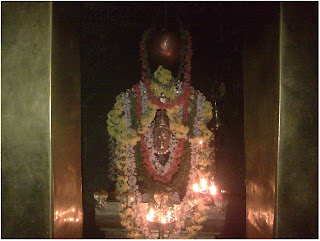
The Caves have archeological significance as they depict 7 different periods of history. These paintings can be divided into five major historical periods:
[1] Upper Paleolitic - Old Stone Age You can find here the wild animals painted on the walls. There are huge figures of bisons, deer tigers and rihnoceroses make the major part of these paleolithic paintings. [2] Mesolithic Paintings The paintings now are more refined with linear decorations on the body of human beings, hunting scenes, music and dance festivals. [3] Chaleolithic Period These paintings depict the mixing up of the cave man with the agricultural communities of the Malwa Plains. [4] Early histotric You can see the drawings of yaksh, tree gods and sky chariots.Painted mainly in red and yellow these depict the riders, tunic like dresses, scripts and religious symbols. [5] Medieval Period Geometric and schematic pictures paintings. But these paintings show crudeness in their artistic style.In these cave paintings the use of crude chipped stone tools has been done in abundance along with the use of twig brushes dipped into charcoal and plant extracts has been done here. What is most interesting is the existence of these paintings even after such long period! Also these paintings on the bear resemblance to the Upper Palelithic Lascaux cave Paintings in France and Kakadu National Park in Australia.
Photo courtesy: i.pbase




.jpg)

